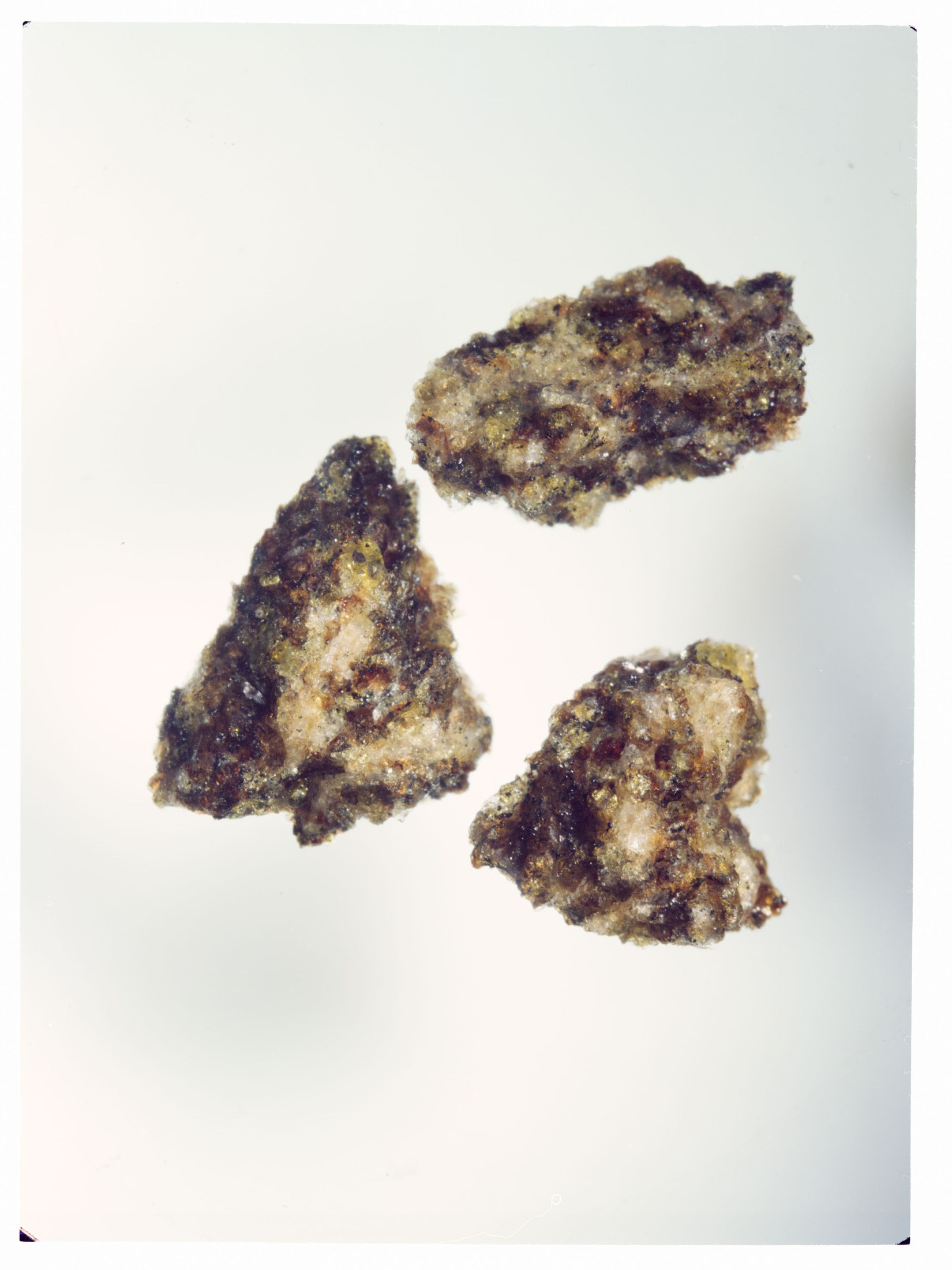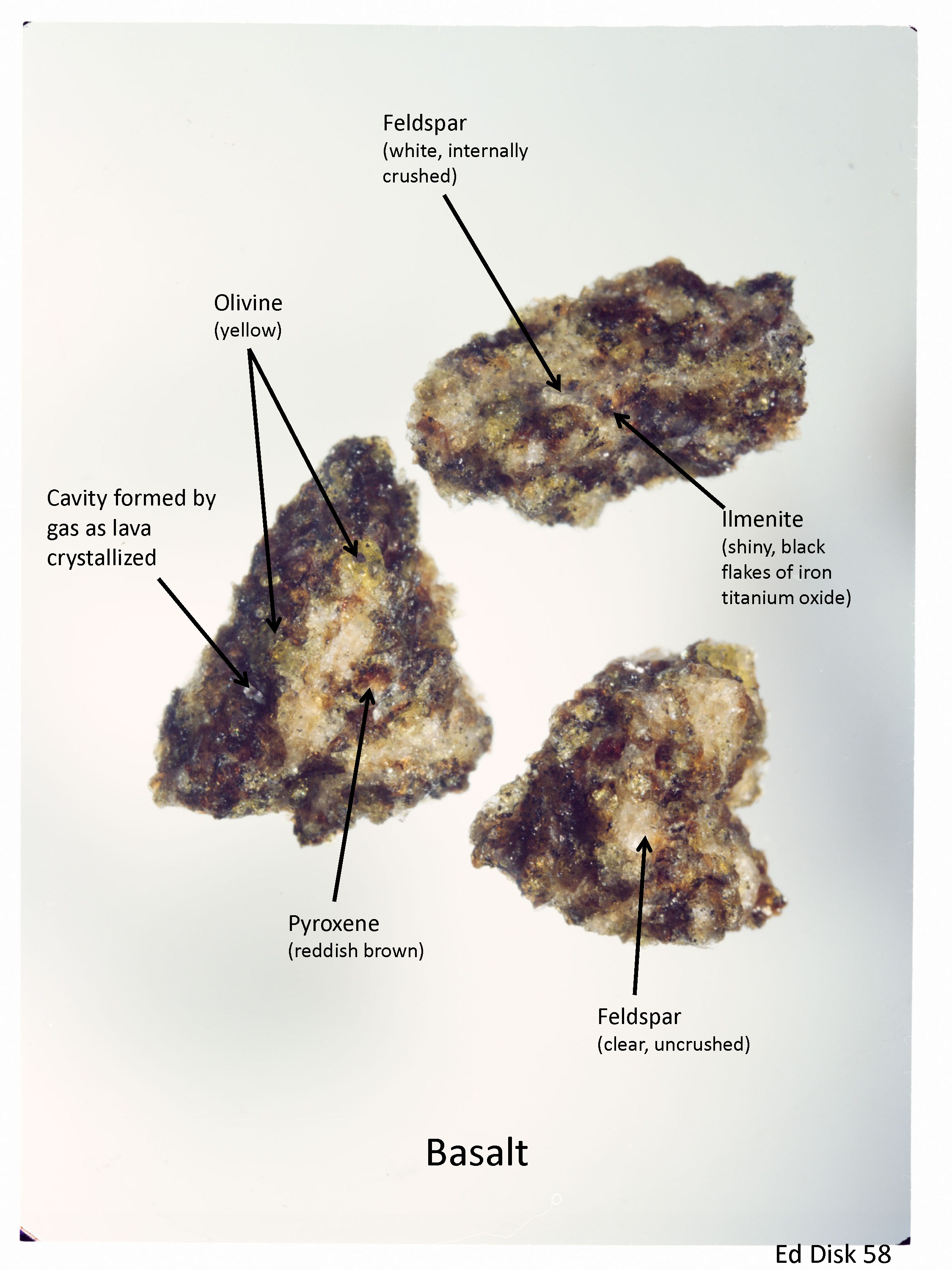Lunar Disk 58: Basalt
A basalt forms when the lava that flows onto the surface of the Moon cools and crystallizes. The individual mineral grains are large enough to be seen under a microscope and consist mainly of pyroxene and feldspar, and lesser amounts of olivine and ilmenite (iron titanium oxide). (Examples are marked on the photograph of the chips.) The individual crystals grew in the molten lava just like ice crystals grow as water freezes. Where gas pushed the still liquid part of the lava away to form cavities, the crystals could form their own distinctive shapes, as do snowflakes that grow in air.
Basalt flows are the dark materials that have filled the lowlands on the Moon’s surface. These areas cover about half of the Moon’s face. Because they are smooth and have flooded the lowlands, each of these areas is called a mare or sea. They are surrounded by the lighter colored, hilly and mountainous highlands. The dark areas that are circular are basins, produced by large meteorites. These basins have been filled by many basalt lava flows, from one of which the basalt in this disk came.
The three small chips in this disk, together weighing about 1/2 gram, were removed from a large rock, which is numbered 15555 and weighed 9614 grams (21.3 lbs.). In August 1971, the rock was collected by the Apollo 15 astronauts at the east edge of Mare Imbrium, the large circular area on the upper part of the Moon, just left of center.


